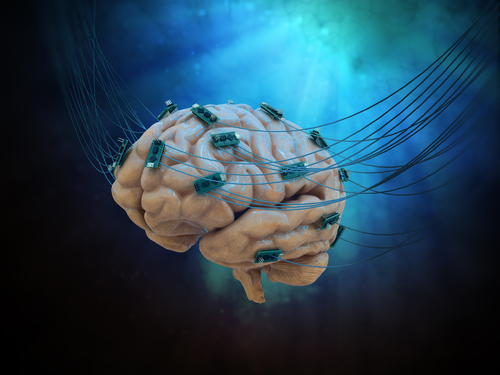Deep Brain Stimulation Found Helpful for Working-age Parkinson’s Patients

Working-age adults with Parkinson’s disease who received deep brain stimulation (DBS) showed better social and occupational functioning than those who received the best medical therapies alone, a study has found.
As such, the authors suggest, DBS could be prescribed to this Parkinson’s population to help preserve these aspects of their lives.
The study, “Deep Brain Stimulation Impact on Social and Occupational Functioning in Parkinson’s Disease with Early Motor Complications,” was published in the journal Movement Disorders.
DBS is an established treatment for people with Parkinson’s disease who do not adequately respond to medical therapy. It is a surgical procedure in which electrodes are implanted in certain areas of the brain, generating electrical impulses to control abnormal brain activity.
Eligible patients usually live with the condition for more than 10 years after medical therapy has been prescribed, when severe motor complications have markedly reduced quality of life and they are within retirement age.
However, it is not uncommon for Parkinson’s symptoms to begin in working-age individuals, leading to less productivity and more absenteeism that may contribute to an increased financial burden.
So far, only one small study has investigated the impact of DBS in working-age Parkinson’s patients, finding that DBS may help preserve working capability.
The Phase 4 EARLYSTIM trial (NCT00354133), with sites in Germany and France, was designed to evaluate the impact of DBS on quality of life compared with the best medical therapy (BMT) in Parkinson’s patients of working age.
Enrolled participants were under 60 years old, had experienced a recent onset of motor symptoms (within the past three years), and were still able to deal with everyday life challenges.
In this study, researchers conducted a secondary analysis of EARLYSTIM to understand the effect of DBS on social and occupational functioning in working‐age Parkinson’s patients compared with best medical therapy.
Social functioning refers to an individual’s ability to interact with his or her environment and fulfill his or her role at work, social activities, and in relationships with friends and family. Occupational functioning refers to a person’s ability to physically and psychologically serve an occupational purpose efficiently, such as a unique work setting.
A total of 251 patients, at an average age of 52, with an average disease duration of 7.5 years, were enrolled, of whom 124 were randomly assigned to DBS plus best medical therapy (DBS group) and 127 to best medical therapy alone (BMT group). The baseline (initial) employment rates (part time or full time) were comparable in both groups at about 62%.
For this analysis, outcome measures included the Social and Occupational Functioning Assessment Scale (SOFAS), the Scales for Outcomes for Parkinson’ s-Psychosocial (SCOPA‐PS), and the Professional Fitness questionnaire, to determine ability to work and work status.
Patients were assessed at the beginning of the study (baseline) and five, 12, and 24 months after randomization with some measures evaluated at baseline and 24 months.
For patients treated with DBS, the SOFAS score for social and occupational functioning improved by 11% from baseline to 24 months. In contrast, for those who received BMT alone, this score decreased by 3%, with a significant difference of 9.8 points on average between the two groups.
The SCOPA‐PS analysis that measures psychosocial functioning, which denotes the mental and social factors in a person’s life, improved by 28% (-2.5 points) from baseline to 24 months in the DBS groups, compared with 3% in the BMT group (-0.5 points).
After 24 months, employment status (unemployed or employed full time) was 44.2% in the DBS group and 40.2% in the BMT groups, which was not significantly different.
Based on the Professional Fitness questionnaire, where physicians were asked to rate patients as either “able to work” or “unable to work,” there was an increase in the number of patients rated as unable to work in the BMT group over 24 months. In contrast, there was no change in the DBS group. This difference between the two groups was statistically significant in favor of DBS.
When patients assessed their ability to work, the number of those unable to work increased over 24 months in the BMT group, from 27% to 36%, while there was no significant change in the DBS group.
Finally, a comparison between physicians’ and patients’ ability to work ratings was further explored using the Starkstein Apathy Scale. The results showed significantly worse patient‐reported apathy in patients whose physicians gave them a higher ability to work rating than did the patients themselves, compared with those with the same, or lower, ability to work ratings as assessed by physicians.
“To the best of our knowledge, this is the first publication of social and occupational outcomes of DBS compared with BMT for patients with [Parkinson’s disease][less than] 60 years of age with early motor complications,” the researchers wrote.
These findings showed that” DBS significantly improved social, occupational, and psychosocial functioning from baseline through 2 years compared with BMT,” they added.






